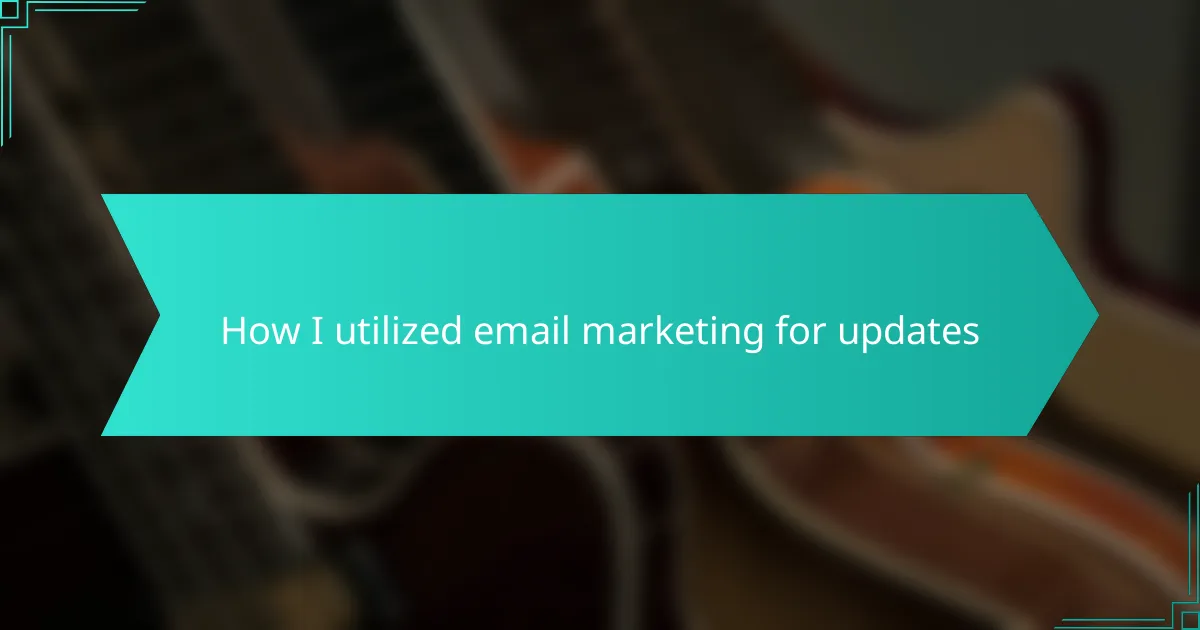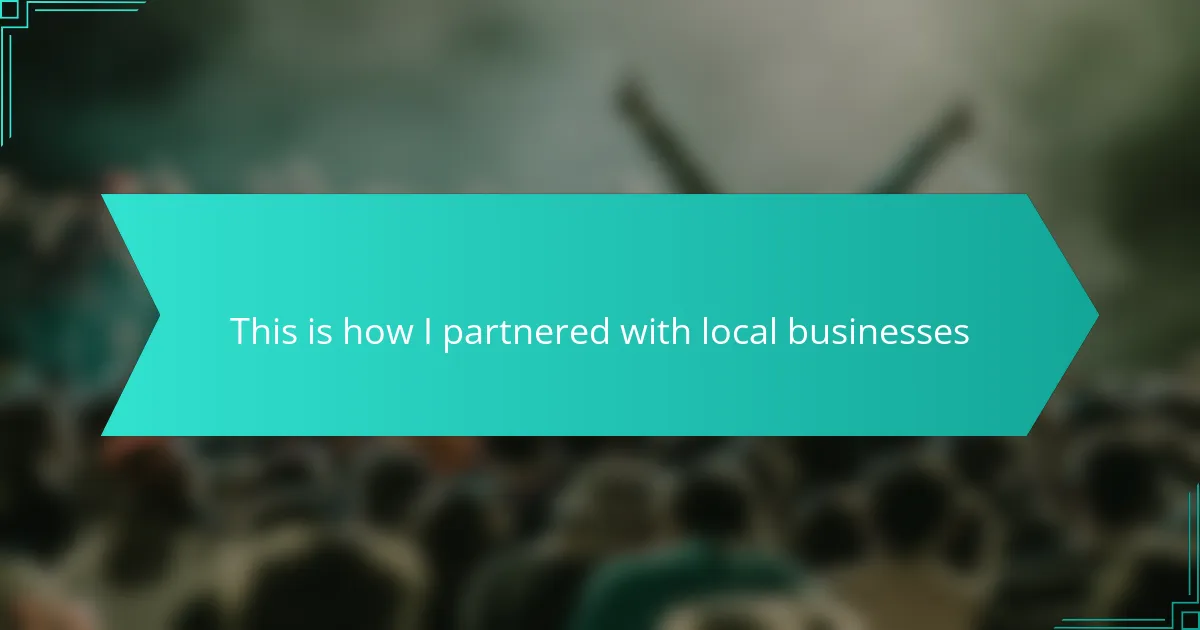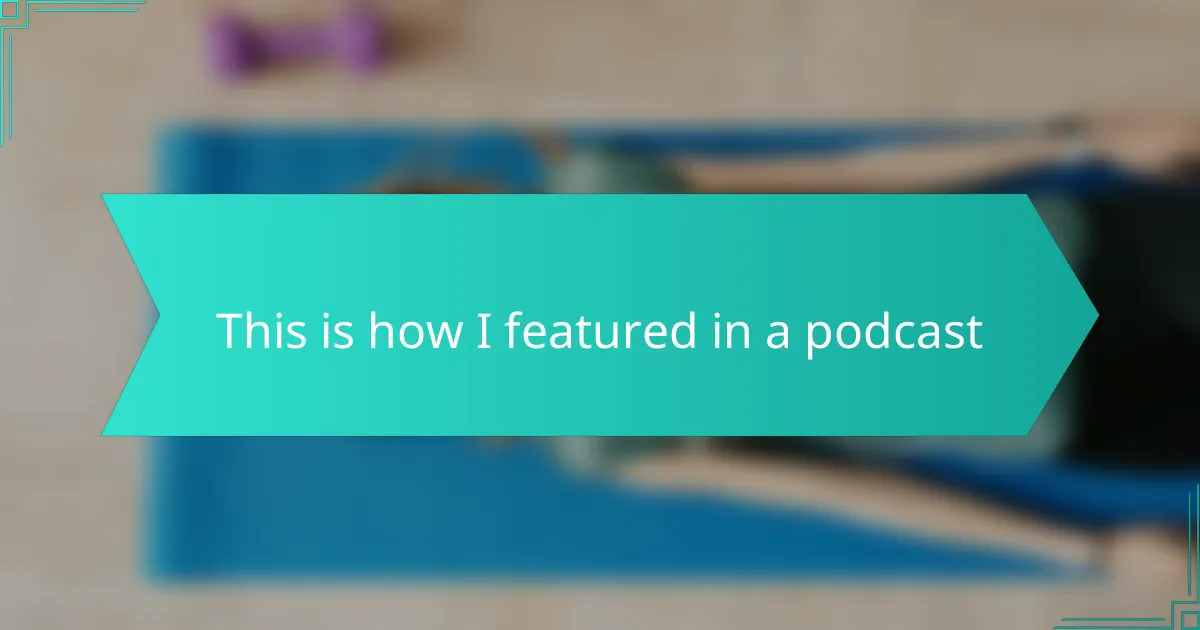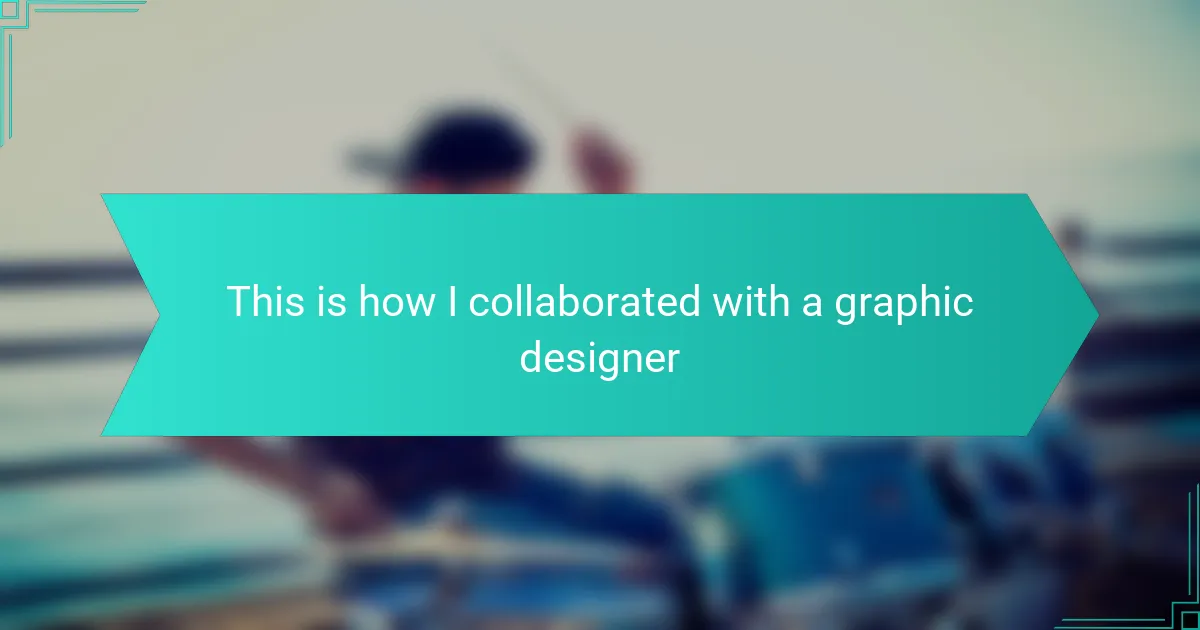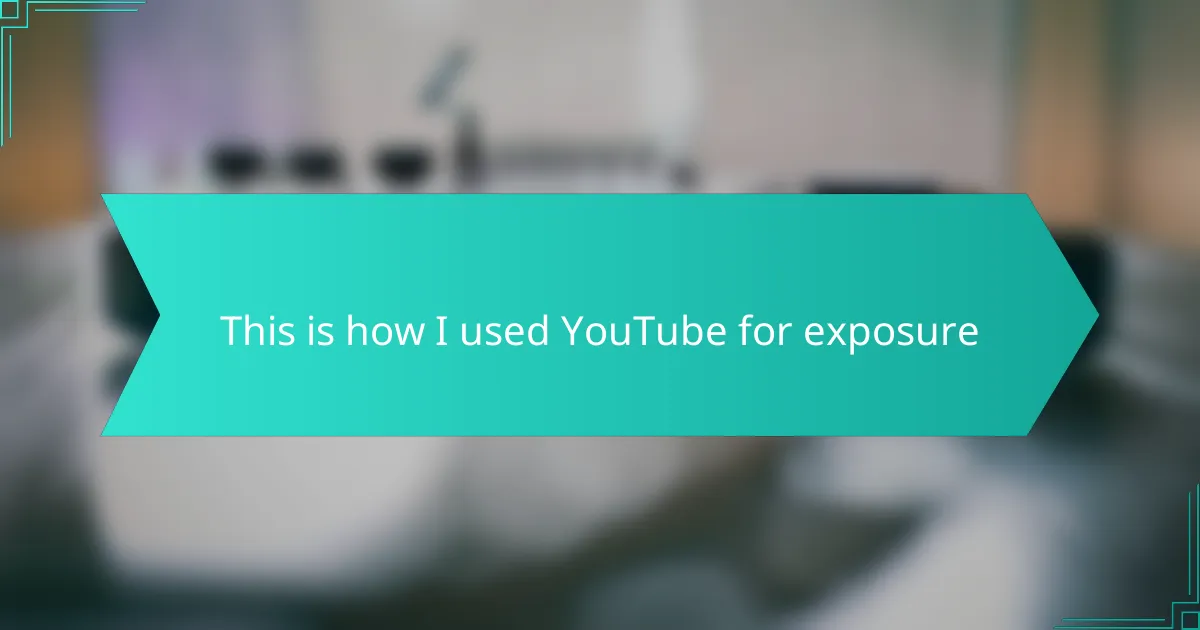Key takeaways
- Email marketing helps musicians build direct relationships with fans, enhancing engagement and fostering loyalty.
- Segmentation of the audience based on preferences improves email relevance and boosts open rates.
- Offering exclusive content and utilizing personal stories makes email communication more engaging and authentic.
- Analyzing email performance metrics allows for strategic adjustments, improving overall outreach effectiveness.
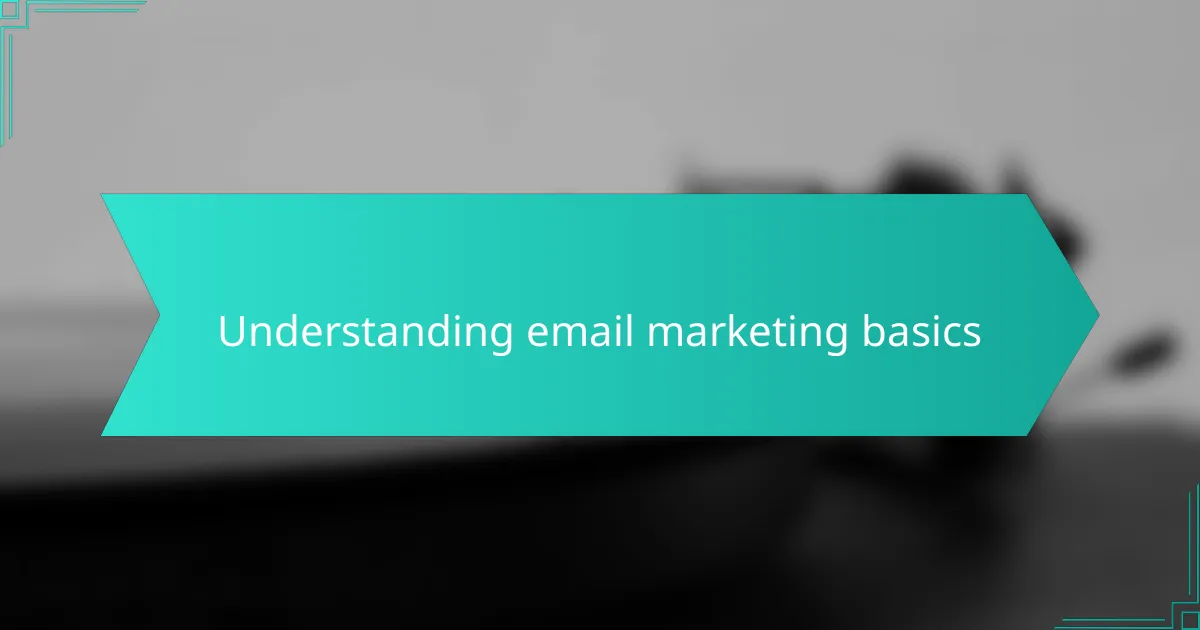
Understanding email marketing basics
Email marketing is an essential tool for any musician looking to keep their fans updated and engaged. When I first started my journey, I was skeptical about how impactful an email could be. But I soon realized that a personalized email could create a direct line of communication with my audience, allowing me to share updates, insights, and even behind-the-scenes stories that resonated with my fans.
Understanding the basics of email marketing involves knowing how to craft engaging content and the importance of segmentation. I remember when I divided my email list into categories based on fan interests—those who loved new releases, those who were keen on live shows, and so on. This made my messages more relevant, and I noticed a significant increase in open rates. Here are some basic concepts to keep in mind:
- List Building: Collect email addresses through sign-ups on your website and during live shows.
- Segmentation: Organize your audience based on their preferences and behaviors.
- Content Planning: Decide what types of updates to send—news, new music releases, or concert notifications.
- Engagement: Use an engaging tone and prompt readers to interact, whether by clicking links or replying with their thoughts.
- Analytics: Track open rates and click-through rates to understand what works best for your audience.
In my experience, taking the time to understand these foundational concepts can make a substantial difference in how your email marketing efforts connect with your fans.
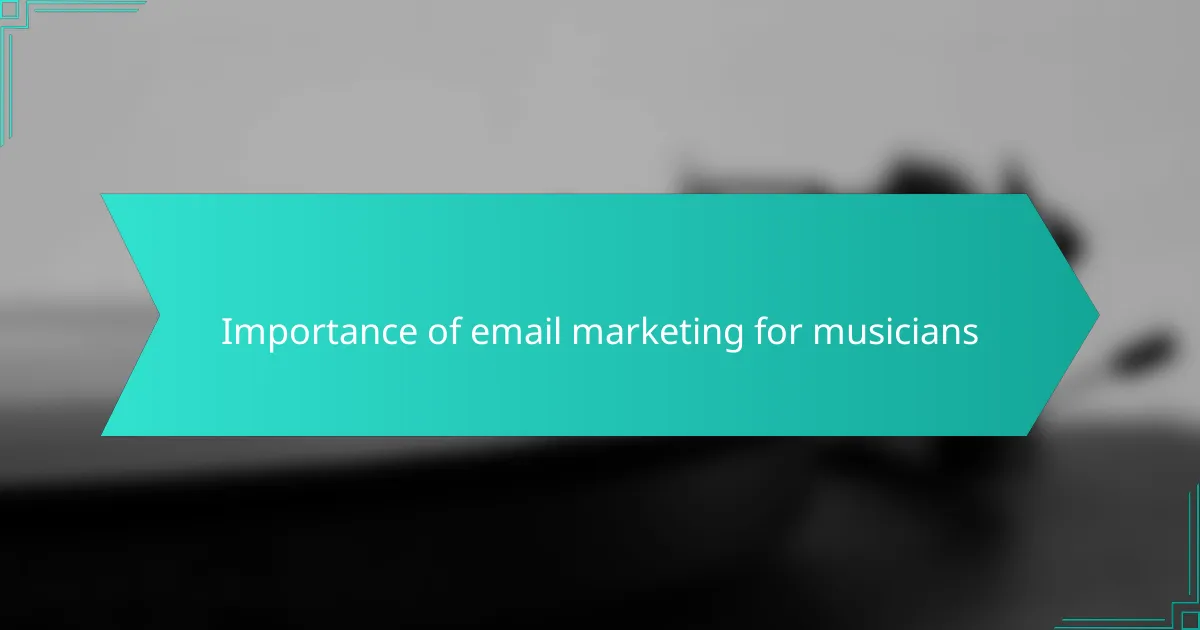
Importance of email marketing for musicians
Email marketing is a powerful tool for musicians wanting to engage with their audience. I remember when I first started using email campaigns; the direct connection with fans was incredible. It allowed me to share updates, announce new releases, and even generate excitement for upcoming shows. The personalized approach creates a sense of community that social media sometimes lacks.
One of the key benefits is that it provides greater control over your messaging. Unlike social platforms with their algorithms, email lets you reach your audience directly. The emotional connection I felt when fans replied to my emails was rewarding—it showed that they truly valued my updates, fostering a loyal fan base.
Furthermore, email marketing has proven to be cost-effective. With minimal investment, I could reach hundreds, even thousands, of fans at once. This accessibility has been a game changer for my career and many musicians I know.
| Benefit | Email Marketing |
|---|---|
| Direct Engagement | Connect with fans directly for updates and news |
| Control Over Messaging | Reach your audience without algorithm interference |
| Cost-Effective | Minimal cost for maximum reach and impact |
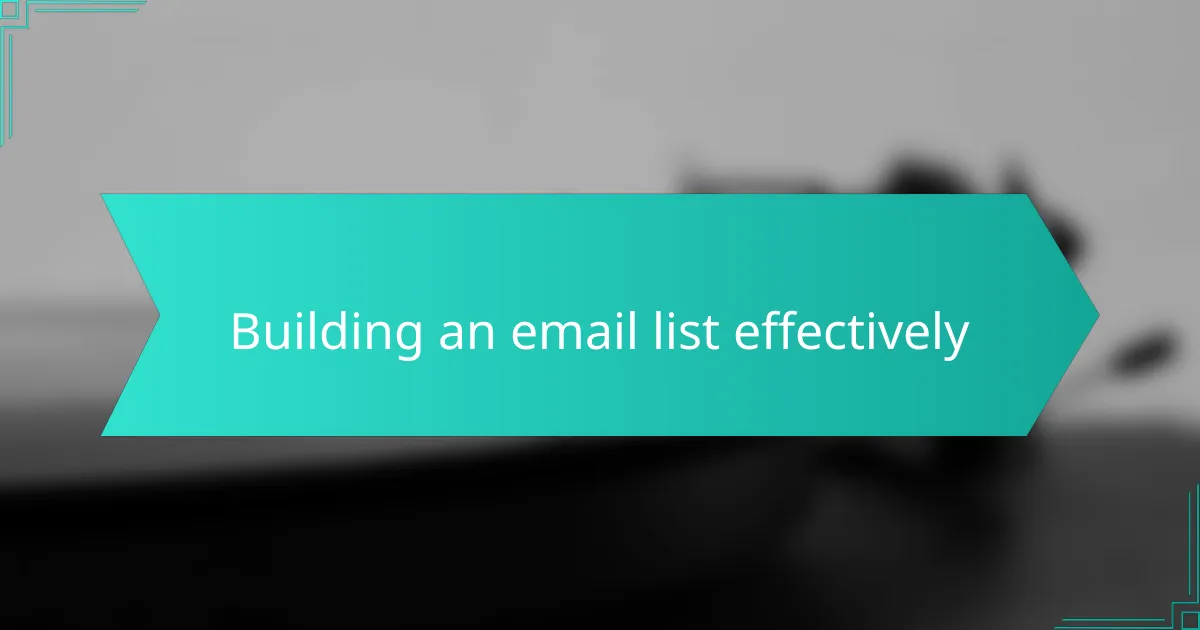
Building an email list effectively
Building an email list effectively is crucial for any musician looking to connect with their audience. I’ve found that offering exclusive content, such as behind-the-scenes updates or early access to new music, really encourages fans to subscribe. This personal touch not only grows your list but also fosters a sense of loyalty among your fans.
I remember when I first started my journey; I added a sign-up form to my website along with a free downloadable track. It felt amazing to see subscribers increase each week. It’s those little incentives that keep fans engaged and eager to hear from you.
Here’s a comparison of different strategies to build an email list effectively:
| Strategy | Pros |
|---|---|
| Exclusive Content | Encourages subscriptions; builds loyalty |
| Free Downloads | Attracts immediate interest; easy to share |
| Contests and Giveaways | Boosts engagement; creates buzz |
| Referral Programs | Leverages existing fans; increases reach |
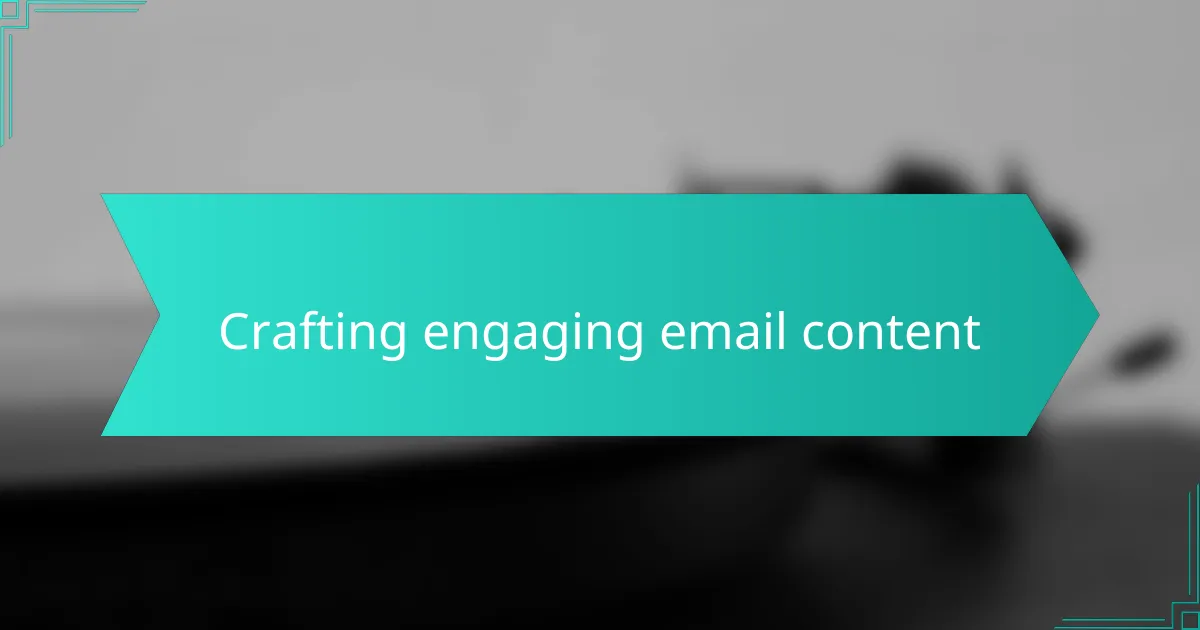
Crafting engaging email content
When crafting engaging email content, I always prioritize the authenticity of my messages. I remember the first time I sent out a newsletter with a personal story about my journey in music. The responses I received were heartwarming; readers felt a connection as they shared their own experiences. That feedback emphasized how personal anecdotes can truly resonate, making your audience feel like they’re a part of your journey.
I also like to mix up the content to keep things fresh. Here are some effective strategies I’ve found helpful:
- Use catchy subject lines to grab attention.
- Incorporate personal stories or behind-the-scenes glimpses of your career.
- Offer exclusive insights or tips that your audience can’t find elsewhere.
- Include calls to action, encouraging readers to engage or respond.
- Utilize visuals, such as images or videos that reflect your musical journey and brand.
By combining these elements, you not only inform your audience but also create an emotional connection that encourages loyalty.
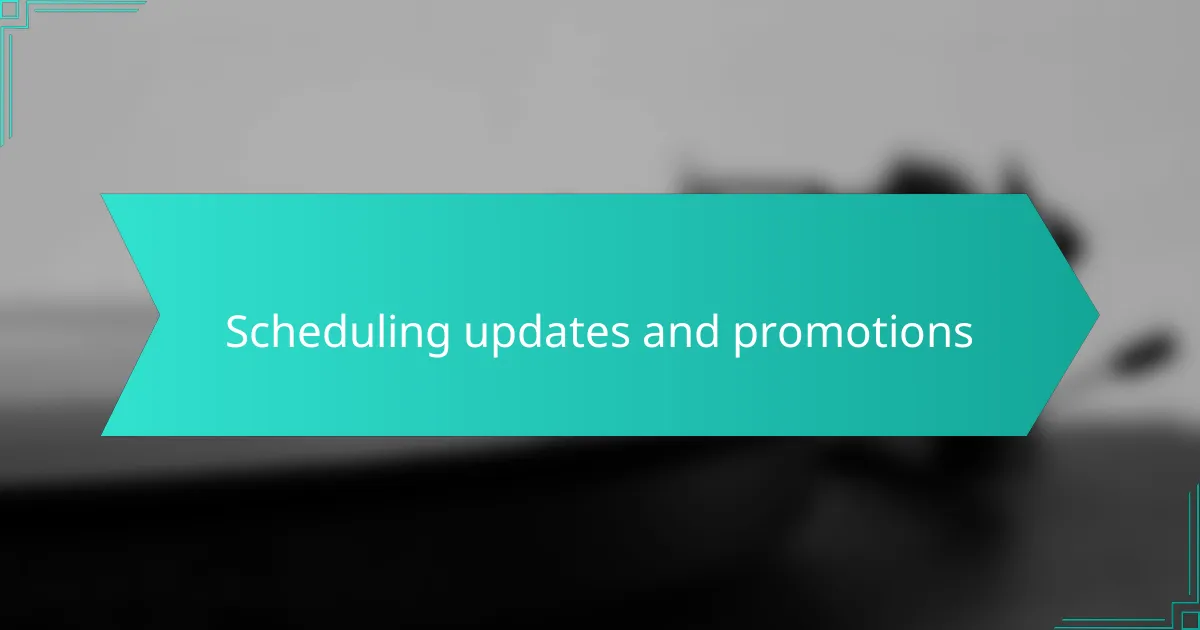
Scheduling updates and promotions
I find that scheduling updates and promotions in email marketing is essential, especially in the music industry. I remember the excitement of releasing a new song and how carefully I planned the timing of my emails. By scheduling my updates strategically, I was able to build anticipation and keep my audience engaged, leading to a noticeable increase in my streaming numbers.
One effective strategy I’ve employed is to synchronize my email campaigns with major milestones like album releases, concerts, or special announcements. This not only maximizes visibility but also creates a sense of community among my fans. They appreciate receiving timely news, and their enthusiasm motivates me even more.
Here’s a quick comparison of two popular scheduling techniques I’ve used in my campaigns:
| Technique | Description |
|---|---|
| Time-Based Scheduling | Sends emails at specific times based on analytics, ensuring optimal engagement. |
| Event-Triggered Scheduling | Emails are sent automatically when certain actions are taken by the audience, like signing up for a newsletter. |
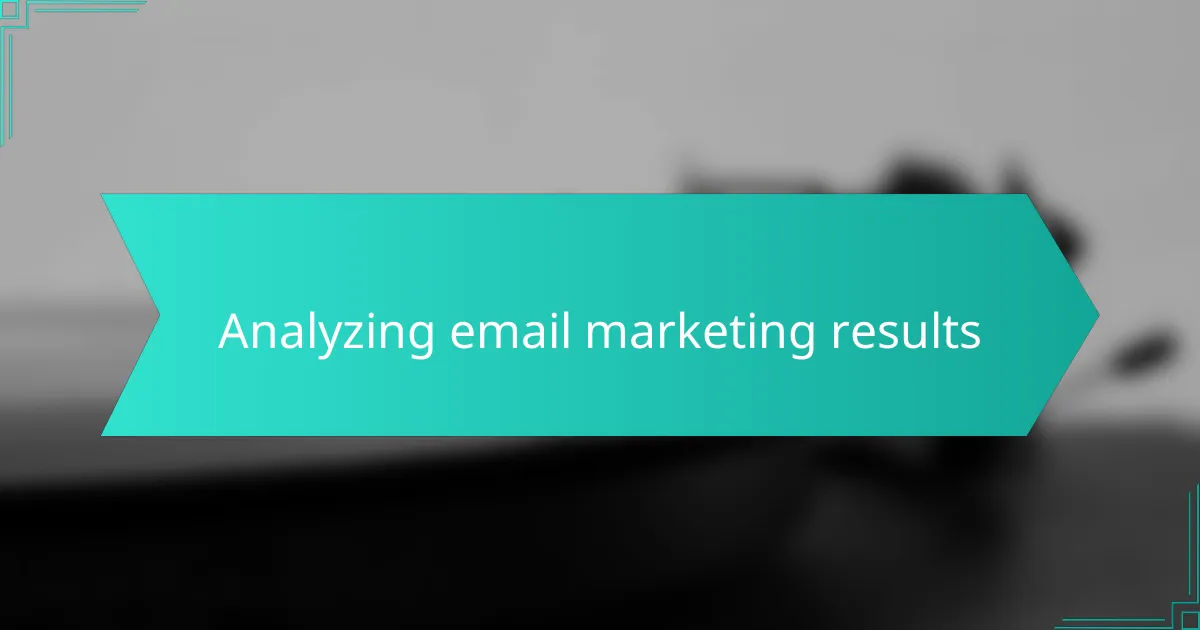
Analyzing email marketing results
Analyzing the results of my email marketing efforts is where the magic really happens. I often look back at my open rates and click-through rates to gauge what resonates with my audience. I remember the first time I tweaked my subject line and saw my open rates skyrocket from 20% to over 40%. It was a clear signal that small changes can lead to significant improvements, which I found both exciting and empowering.
One interesting observation I made was the correlation between the timing of my emails and engagement levels. For example, sending updates on Friday evenings seemed to lead to higher interaction. Do you ever wonder if your fans are better engaged at specific times of the day? I did, and it took experimenting with different days and times to find that sweet spot. The analytics provided a roadmap, guiding my efforts toward improved results.
As I analyzed my results, I also leaned into segmentation. When I realized that my hardcore fans responded better to concert updates while casual listeners preferred new releases, I shifted my approach. This personalization not only boosted my engagement metrics but also made me feel more connected to my audience. It’s rewarding to see how tailored content can deepen relationships. How have you seen segmentation impact your own communications?
